The Monastery of Saint Nicholas, The Protector of cats, lies by Limassol Salt Lake at Cape Akrotiri. Built at the beginning of the 4th century by order of the Byzantine Emperor Elena, it is one of the oldest dwellings on the island. The monastery obtained its unusual name thanks to it long having been a place of refuge for cats, who once saved the island from an infestation of snakes.




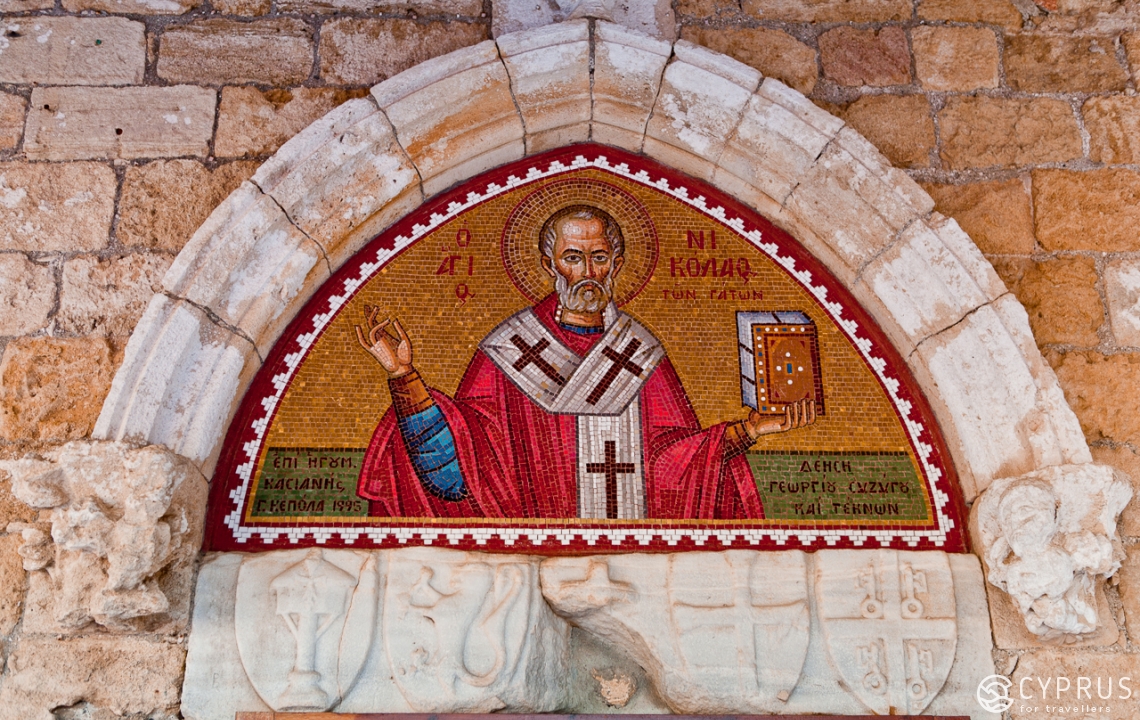
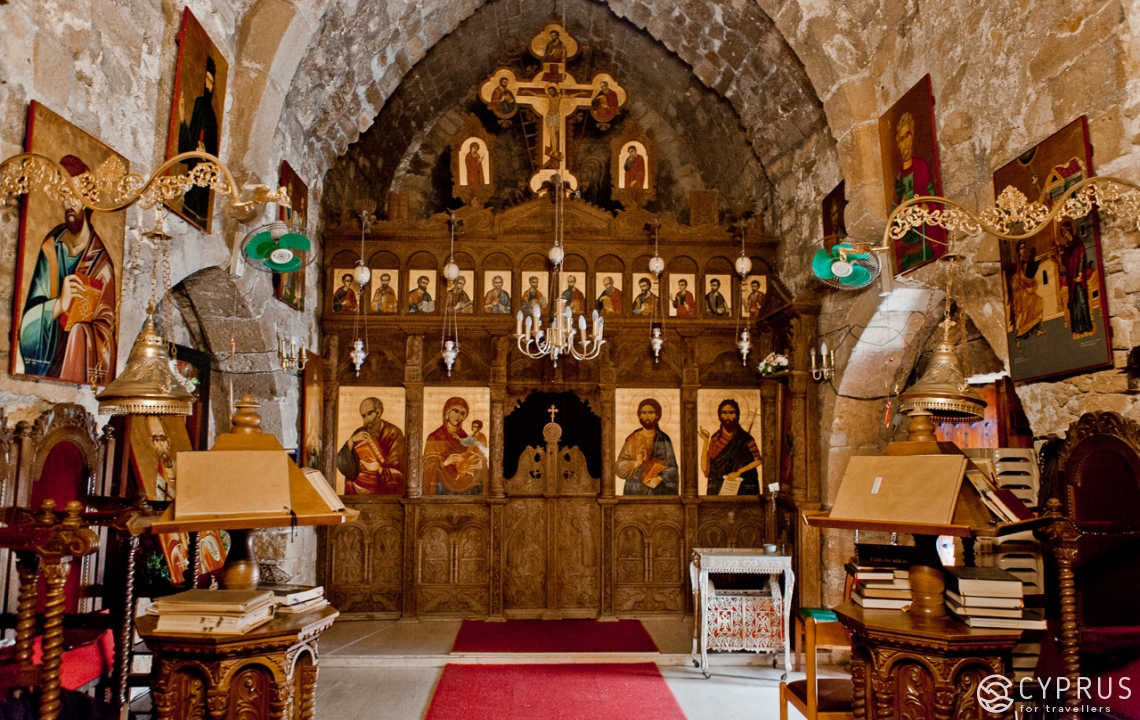
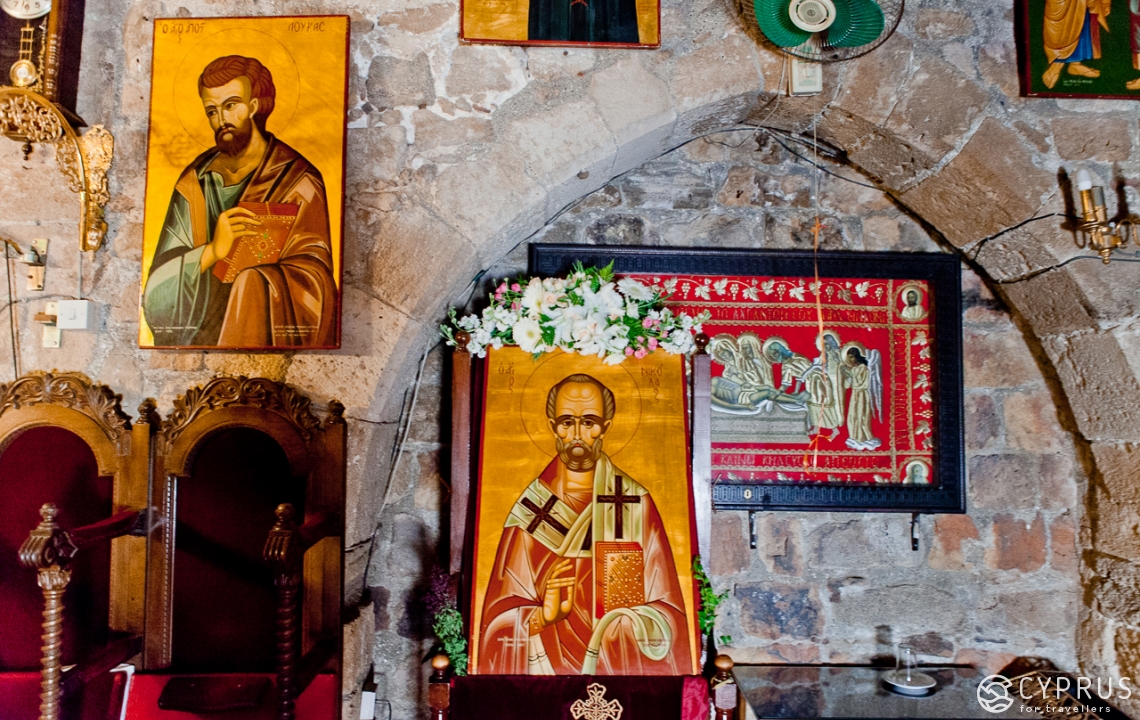
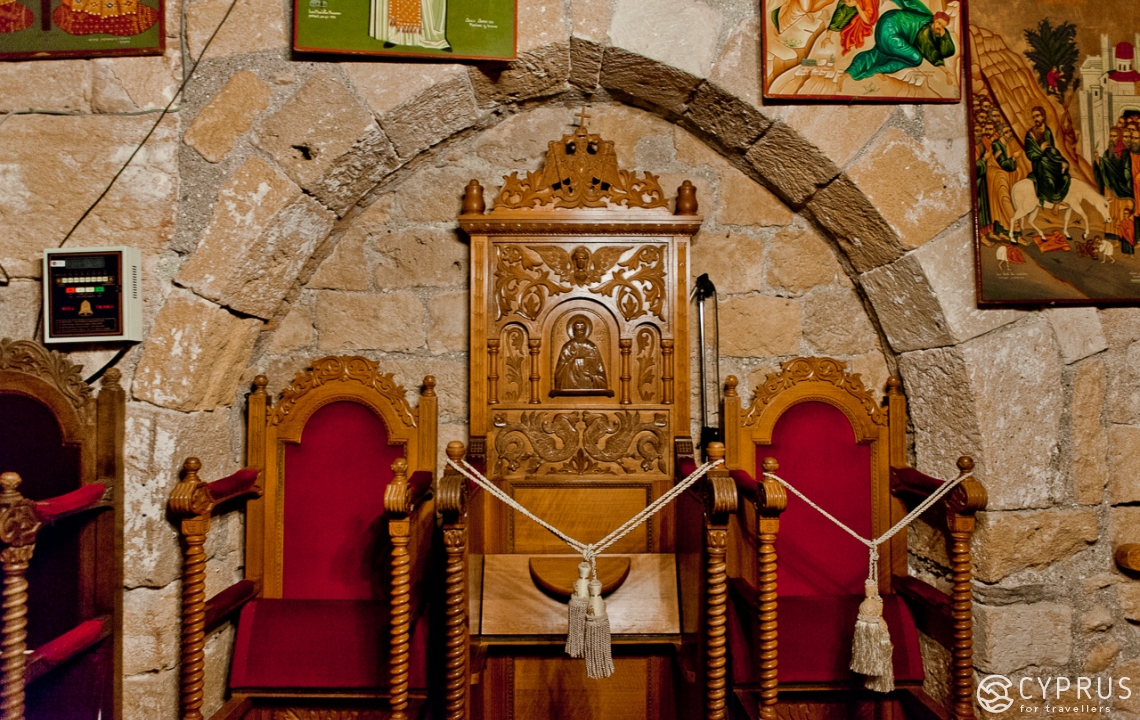
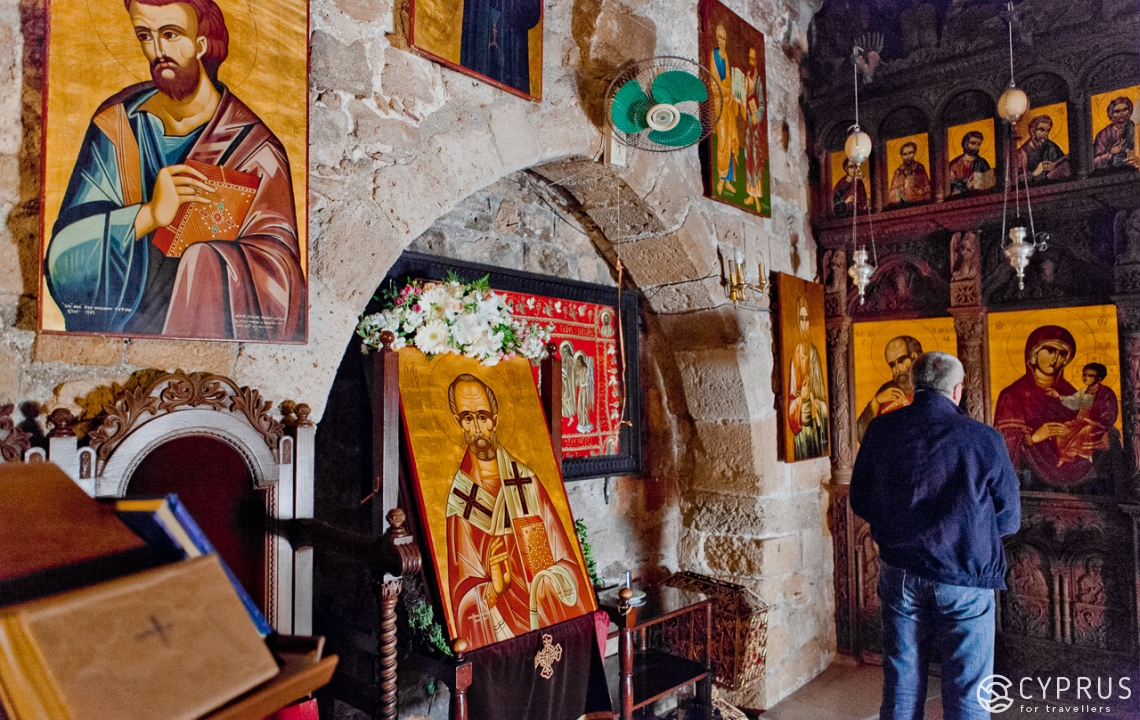
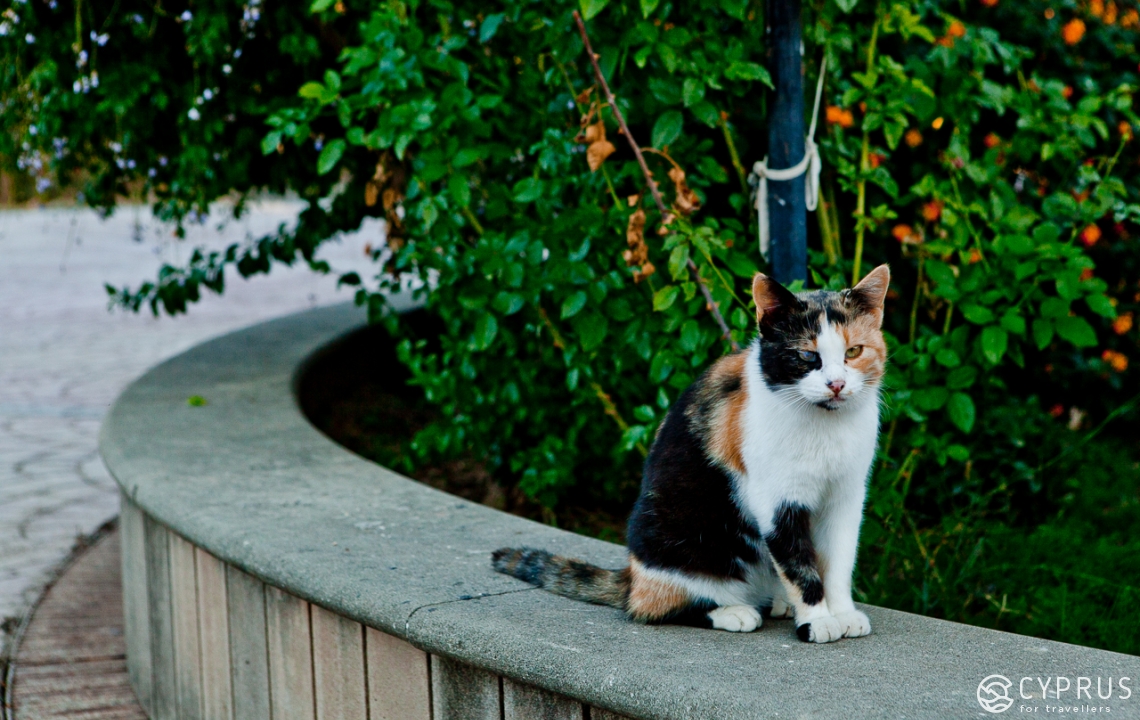
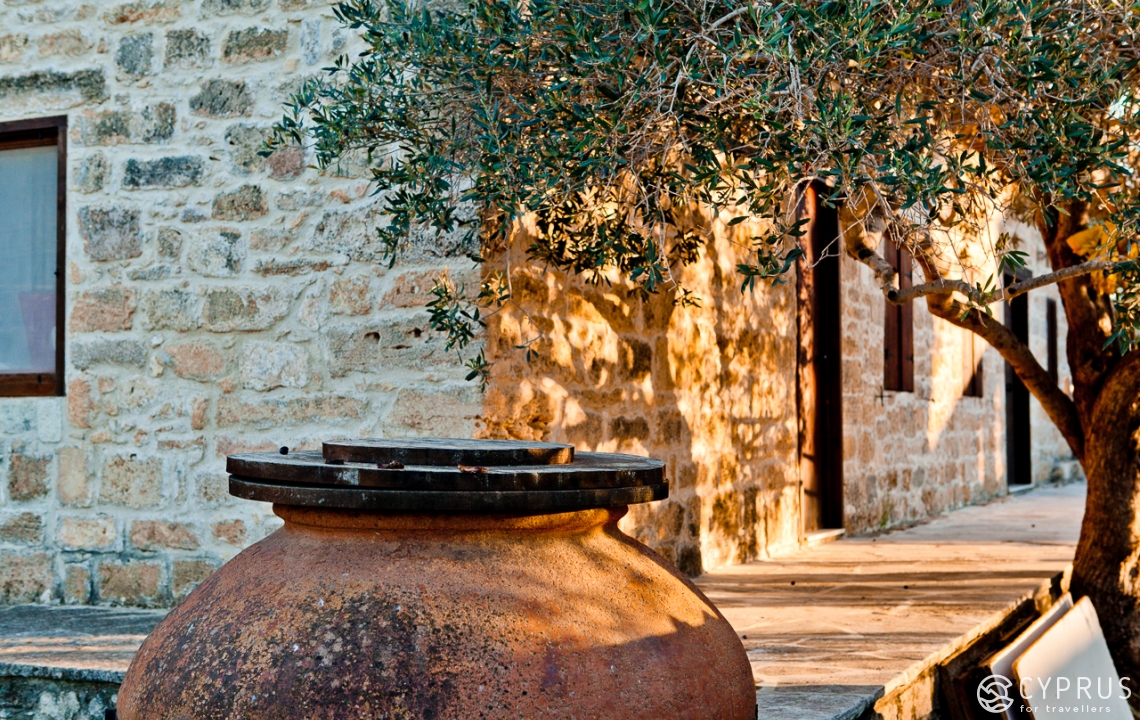
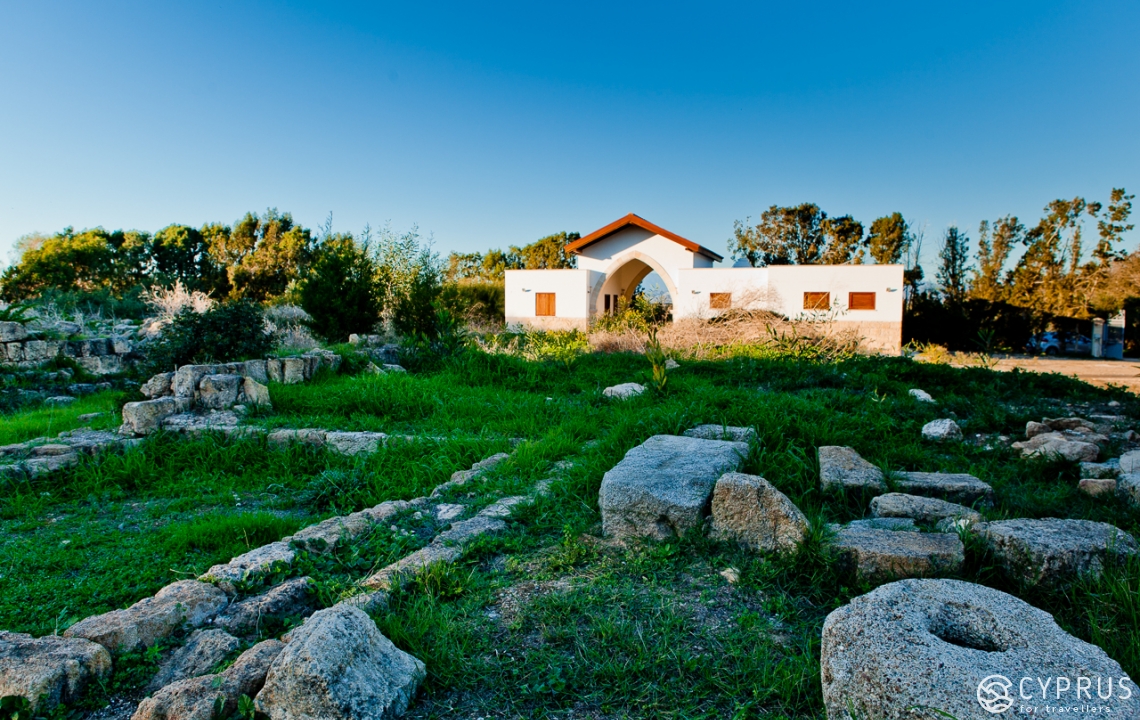
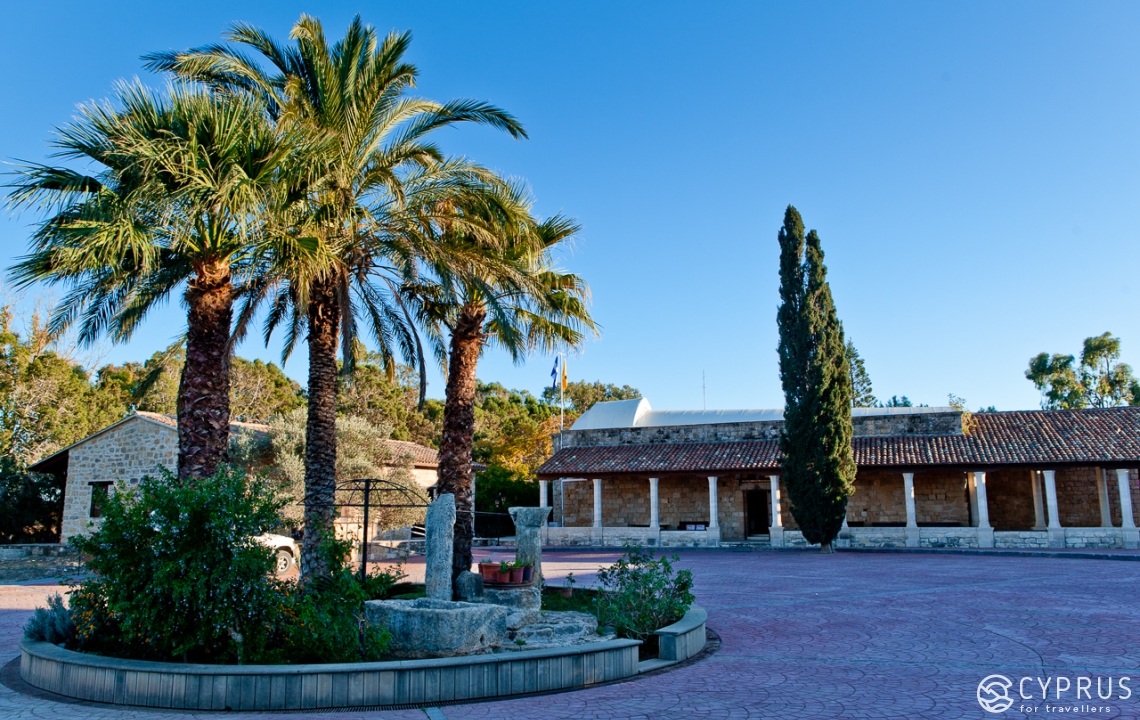
Construction of the monks’ abode at Cape Akrotiri was led by Kalokeros, the Governor of Cyprus. He was charged with guarding the cats, which Saint Elena had ordered be brought from Egypt and Asia Minor to kill the snakes, but he transferred his duties to the monks who had settled in the monastery. At that time, more than a thousand animals resided within the building’s walls. In order to improve their hunting skills, the cats were fed only venomous snakes and summoned for breakfast and dinner by the chime of a bell. Rumours of strange snake-catching felines began to attract travellers from the world over. The Emperor at that time then granted the monks exclusive rights to fish in Limassol Salt Lake on Saint Nicholas day. This tradition, albeit having changed somewhat, is still alive and nowadays — on Saint Nicholas Day, the patron saint of fishermen, local residents go fishing and then give away their entire catch to the monastery’s cats.
The ancient church is the monastery’s most prized possession. Built in the 14th century, it is a single-nave, arched basilica with blind walls, which has mostly preserved its initial appearance. The arches are constructed in a Franco-Byzantine style, with a single window cut into the outer apsis through which light falls onto the altar area. Seven ancient arches, belonging to the earlier build, have been preserved in the closed gallery which encircles the church. The main entrance into the church is decorated by a mosaic depicting Saint Nicholas, which was crafted by the contemporary artist George Kepolos. The marble lintel is also attributed to an earlier build and features the coat of arms of the House of Lusignan and other noble French families. The two-tiered wooden iconostasis is decorated with images of angels and peacocks, as well as carvings with floral motifs. The walls in the western part of the nave feature spaces which house ancient architectural fragments from the monastery’s earlier build.
The dwelling was initially a monastery, but at present is now a convent for female monastics. In 1983, sisters Helpida and Kasani, from the monastery of Saint Georgios Alamanou, came to the destroyed dwelling of Saint Nicholas the Cat Lover. Thanks to their efforts, the ancient buildings were restored with new ones erected, new gardens and olive groves were planted and the revitalised monastery once again became a Christian pilgrimage site. Several sisters and close to a hundred cats now live here, still guarding the area against snakes. The Nobel prize laureate Giorgos Seferis wrote a poem dedicated to the monastery and its inhabitants, titled “The Cats of Saint Nicholas”.
Photography by Daria Saulskaia

